It takes a long time to create a new potato variety, and it requires a vision. Every day, agriculturalists are working on developing varieties that could be immune to various diseases someday, and that meet the desires of growers and consumers. The results can often only be marketed decades later. How do you ensure the results of the improvement is relevant for today’s market?
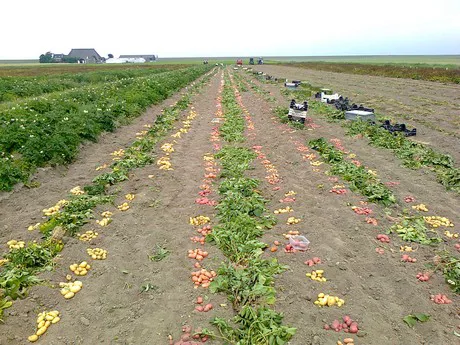
Since the 1970s and 1980s, the Dutch potato production has increased considerably. Although production and trading took place locally in the past, the potatoes now also find their way to the Far East and Africa. That requires a large diversity in varieties. In the Netherlands, total production capacity consists of more than 1,200,000 seedlings per year, which grow 30 to 40 new varieties every year. Most of these are technically good, but don’t make it on the market, so that they’ll have disappeared again after five years. Developing a new variety costs roughly between €250,000 and €1,000,000. It’s therefore essential that agriculturalist, trader and grower are in concert.
Shifts of emphasis
Jacques Vergroesen of Fobek confirms this. “You need three parties: someone who wants to grow the variety, both the seed potato and the consumption potato, someone who wants to eat it, and someone who wants to trade it. If you have these three factors, the variety has a chance of succeeding.” Fobek was founded in 1951 by parties from free trade and free production as counterpart of the growers and traders who started joining forces in cooperatives at the time. Fobek’s customers are its shareholders. Jacques: “Everyone can participate, we grow for any company that would like its own varieties. The organisation’s budget is covered by the 1-on-1 programmes we have in place for every client. After six years, a fairly broad test results in an introduction of the most promising seedlings for the customer, which they can then commercially market. The improvement process starts with cross-breeding. This turns into a seed, which turns into a tuber that we test for several years. The resulting variety is also tested by a trader for a few years, so that it can easily take about ten years before it can be placed on the list of varieties.” An agriculturalist therefore has to be able to look ahead. What does the market need in a decade? “That’s why a constant rapport with trade is important. We consult for every step, so that we can always guide for the customer’s wishes. As an agriculturalist, you’re always working on shifts of emphasis, you won’t suddenly take a left turn.”
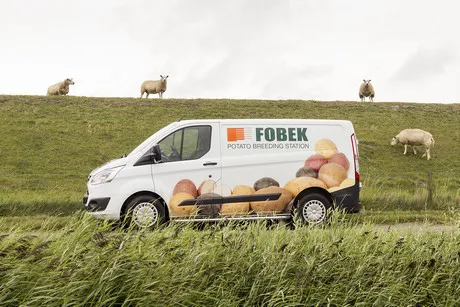
Varied supply for a growing market
“The number of varieties has clearly increased since we were founded in 1951,” Jacques continues. “The market has become larger, and so has the diversity of the varieties. We’re still seeing an expansion in our number of customers. From the Netherlands, potatoes are exported to as many as 80 countries. Looking at the Dutch seed potato production of nearly 40,000 hectares, 40 per cent is focused on processing, one-sixth of which is meant for early processing, and 40 per cent is focused on export to the Mediterranean, part of which is re-export of varieties for packers in Northwestern Europe. The remaining 20 per cent consists of the production of varieties for the production of starch, organic production and the production of consumption potatoes for Northwestern European and specialities, for instance.”
Phytophthora resistance for a more sustainable production
The various diseases growers are dealing with globally are a challenge for agriculturalists. For example, Southern Europe is plagued by Epitrix, South America has Zebrachip disease, and the Mop-top virus cropped up in New Zealand. However, the best known potato disease and formidable opponent of agriculturalists is Phytophthora. That’s because the mould occurs in slightly different shapes each time, like the flu, so that it’s difficult to realise resistance. Halfway through the 19th century, the mould caused a major famine in Ireland, and even now, potato growers still preventatively use pesticides to protect the crop against this disease. The range of pesticides is becoming increasingly smaller because of governmental decisions, while financial consequences of a failed harvest are considerable because of this disease. That’s why Agrico started working on a Phytophthora-resistant variety in the 1980s. “It took us from 1986 till now to introduce a number of varieties that have one or more resistant genes built in,” says Peter Dijk of Agrico. “We used wild, resistant varieties from the Andes. To use these as cultivar, you need to cross-breed a few years back.” For now, Agrico focuses on the organic production with these resistant varieties, also called ‘Next Generation Potatoes.’ Peter explains: “In conventional farming, pesticides are used preventatively, but that’s not an option in the organic production. In a cold and wet season, the disease can get a hold over the plant at an early stage, destroying the entire harvest. Generally, the market for organic potatoes is stable. Supply and demand are in good balance, but this mould can quickly change things.”
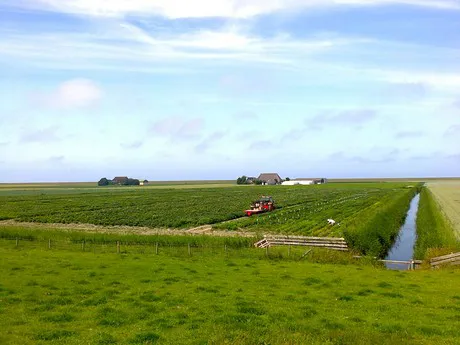
Peter sees the introduction of next generation potatoes as an important first step. “In future there will also be a starch variety that’s Phytophthora-resistant, and we’ll also be using these genes for varieties for conventional production. I can’t say whether chemical treatments won’t be necessary at all any more, but by reducing the use of pesticides this way, we can ensure a cleaner production. That’s something that’s in demand in retail. In a year with a lot of pressure from Phytophthora, growers have to make a choice: either leave the crop as is, or use more pesticides to save the harvest but risk losing a mark of more sustainable production. With this series of varieties, I think we’ll have a much more sustainable production than we’ve ever had with the current range of varieties.”
Three new varieties
A variety that’s resistant to the most important diseases is great, but that doesn’t mean anything for skin quality, flavour, sensitivity to bruising during the harvest and dozens of other aspects. The requirements from the market are changeable. For chip potatoes the grower looks at the yield, and industry wants to know how many potatoes are needed for a certain number of kilos and at what price these are sold.The appearance of the chips varies per segment; long, short, yellow or white. In the Netherlands, we have more than 450 different varieties of seed potatoes to meet the diversity of requirements. As a result of improvement, Fobek introduces three new varieties on the list of varieties for a number of their customers this year. Firstly, there’s a red-and-yellow striped potato called Nemo. “It’s a different, pleasantly sized table potato that looks nice,” Jacques says. Nemo originates from a programme Fobek has for their Canadian customer Tuberosum Technologies. The potato won’t just be tested in Canada, it will also be traded by Kooi in Northwestern Europe. The second newcomer on the list is Hind, an export potato for the Mediterranean. “This one comes from the programme of A. de Nijs & Zn. The variety has a stable, high yield, grows fairly large and is suitable for chips. For De Nijs, it’s a variety to integrate in a region where the Spunta variety is currently the market leader. De Nijs has been our customer for years, they’ve also introduced the Inspyra, Red Sun and Red Valentine varieties through us.” The third variety is still new enough to officially still be called Fob2009-005-007PR. This speciality potato has a purple skin and purple flesh and will eventually be marketed under the name Bleuet. In the Netherlands it’s mostly meant for holidays, while in Canada it’s being tested for year-round sales.
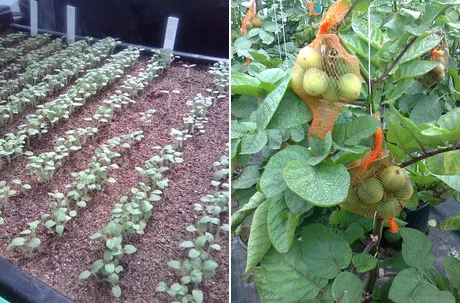
Salinisation a global problem
Besides diseases and the appearance of the potato, agriculturalists are also dealing with climatological developments. The agriculturalists therefore have trial fields in various countries with different climate circumstances. Jacques: “When we have a programme for chip potatoes in Northwestern Europe, we test them in this region. When the programme is focused on the Mediterranean, you have to test locally as well. Salinisation is an increasing problem globally. Standard varieties don’t grow in salty soil. Our production company in Sint-Annaparochie is right next to the Wadden Sea. The varieties developed there, have a fairly good tolerance for salt. The Miss Mignonne variety, for example, has been tested on Texel. It does well there, and is now commercially used in Pakistan. Although salinisation is a global challenge, our varieties are naturally resistant to it. Salinisation is a challenge that will last in European coastal regions. Due to constant pressure, we can already improve varieties resistant to this problem.”
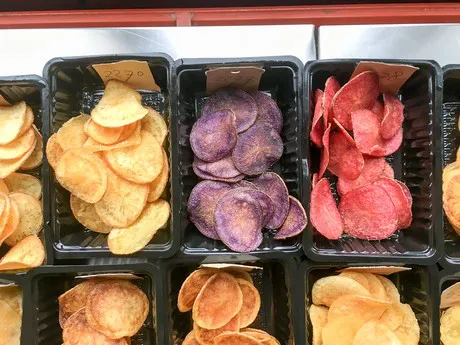
More sustainable than rice
Peter adds: “The potato is already a more sustainable production than, for example, rice, when looking at water usage. The potato contains fibres, vitamins, minerals and other substances that can combat hunger in the world. We’re now at a point that we can grow potatoes in all kinds of regions thanks to improvement. Agrico is working on projects in Africa, to introduce the production of potatoes as a more sustainable production in places where a lot of corn is eaten. We’re gradually also seeing governments paying more attention to this production and the food certainty that comes with it.”
For more information:
jv@fobek.nl
p.dijk@agrico.nl
